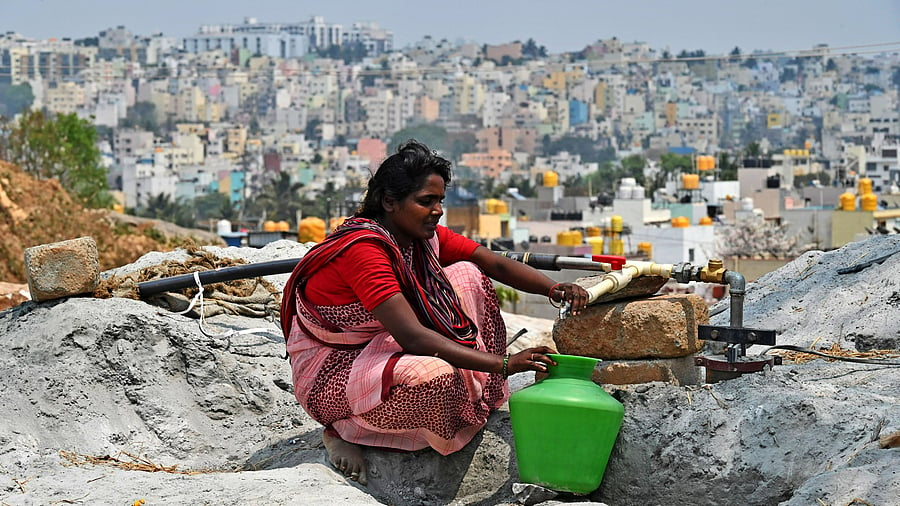
Many heat action plans advise the regular consumption of water during heatwaves. A woman fills a pot of water during a water crisis in Bengaluru.
Credit: DH FILE PHOTO
Bengaluru: This World Water Day, a LocalCircles survey of 6,098 residents across Bengaluru provides a revealing snapshot of how the city’s population accesses and perceives drinking water.
According to the survey, among 3,101 respondents, 37 per cent use a water purifier, 35 per cent rely on RO systems, 11 per cent boil their water, 2 per cent use traditional methods such as clay pots or minerals, and 6 per cent bypass purification altogether, opting for bottled water. Only 1per cent believe the municipal water is clean enough to drink directly, reflecting a significant lack of trust in the purity of the supplied water.
In a separate question with 2,997 responses, 5% described piped water quality as “very good,” 11 per cent as “good,” 43 per cent as “average,” 25 per cent as “poor,” and 14% as “very poor.” Additionally, 2% reported having no access to piped water. This data underlines widespread dissatisfaction, with nearly 40% rating their water quality as poor or worse.
Water expert Tharun
Kumar, told DH, that while RO is widely criticised for being unsustainable — with home systems wasting 40-50 per cent of water — commercial RO setups can recover up to 70-75%. Ongoing research could push recovery rates to 90%, which Kumar describes as a “sweet spot” that could make RO more viable on a larger scale.
He also highlights a critical dilemma: “In India, RO is not sustainable, but anything other than RO is really dangerous because of the water quality we have. We have a lot of chemicals like DDT and endocrine disruptors, such as triclosan — a chemical banned in many countries but still widely used in India. Boiling won’t remove these. Filtration won’t remove these. RO is the only thing that gets rid of everything.”
Water expert Devaraja Reddy NJ stressed that the reject water from RO cannot be used for anything, from construction to gardening. “The excess mineral content in the reject water is harmful to soil and stops cement from bonding correctly. RO systems should only be used when you’re taking water from deep aquifers. Normal purification is enough for water taken from shallow aquifers. RO systems cannot be used ubiquitously but on a case-by-case basis,” he added.
Reddy also pointed out that the reject water varies from region to region, in areas like Gadag almost 75% of the water is rejected. “Separate RO lines, like sewage lines, can be a solution to collect and manage reject water,” he added.